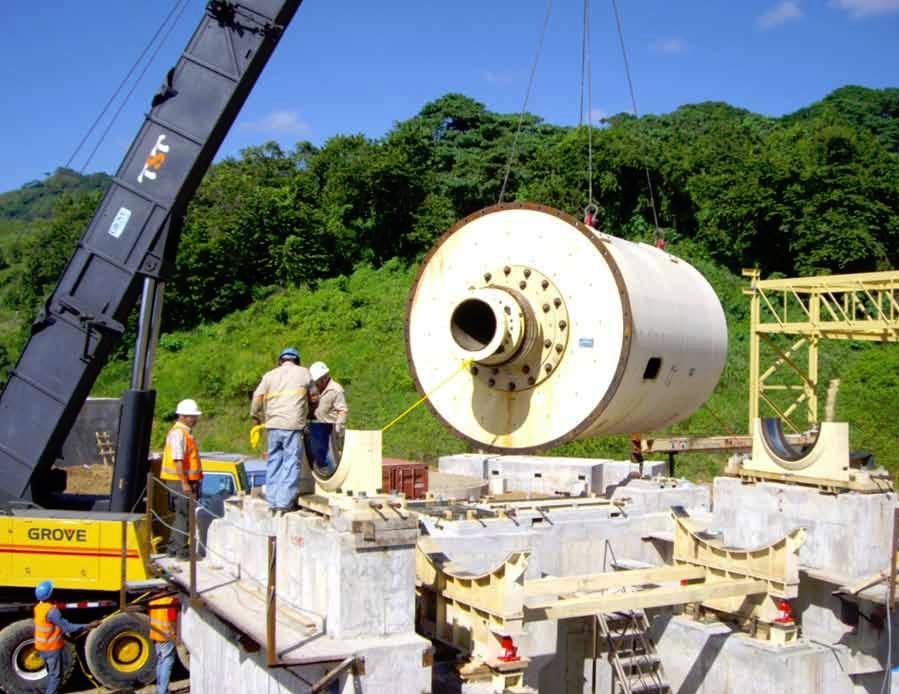
EnviroGold has blended a unique technical process, Australian business and mining expertise and an effective resource development strategy to create the promise of profit, as John O’Hanlon discovers.
EnviroGold was originally listed on the Australian Stock Exchange in 2006 to exploit serious commercial opportunities in gold, and has a market cap today of around A$58 million. Its founder and executive chairman Brian Johnson has a track record in construction and mining industries, and has been on the board of two listed gold producers. He is also a major shareholder in EnviroGold Limited. His aim: “To build a company that is producing over two hundred thousand ounces of gold a year. The objective is to get to over $100 million profit after tax within the next three to four years.”
Quite a goal, but one that can be achieved from the company’s three current active projects. Gold may be doing well on the metal markets and attracting investors but as Johnson points out, there is plenty of competition for the high-risk dollars needed for development of an emerging producer: you need a credible strategy, a capable team and something extra to engender confidence in these nervy markets. EnviroGold has all of these.
EnviroGold’s espousal of the Albion process for oxidising refractory ores could be its USP. Refractory in this context means something like ‘refractory schoolchild’—one that it is difficult to get anything out of by normal means. The Albion process developed by Australia’s MIM Holdings before it was acquired by Xstrata is not the only way to release gold from the clutches of the rock that surrounds it; but it is the best for medium scale operations, Johnson believes. “MIM developed ultra fine grinding of ores using IsaMill technology, and the Albion process is an extension of that. It is quite straightforward: a series of stainless steel tanks that are agitated and injected with large volumes of oxygen. Toxic materials are removed from the solution; it then goes into a standard leach extraction process.”
Johnson likes the process for two reasons: firstly, the availability of Xstrata’s highly sophisticated pilot plant in Australia, which can be used to determine how applicable the process is for a particular ore; secondly, because it allows EnviroGold to pin down the probable yield from difficult or complex ore bodies. Accuracy of this sort is more than a convenience—a robust estimating system convinces shareholders that their money is in the right place. EnviroGold doesn’t have an exclusive right to the Albion process but it is the first company, Johnson believes, to licence it and apply it commercially.
EnviroGold’s initial venture has to be uniquely attractive to investors. In 2004 it won the right to process the high grade tailings from the Pueblo Viejo gold mine in the Dominican Republic, for many years the most productive in Latin America. Tailings are generally the rubbish dump of the mine, says Johnson, but Las Lagunas (as the project is named) was different. “In 1992 Rosario, the Dominican state controlled mining company, exhausted the oxide ore [weathered ore near the surface]. It then encountered underlying refractory ore. At that stage it should have added an oxidation methodology of some sort but government investment was not forthcoming so the recovery rate dropped from 90 per cent to around 30 per cent!”
This meant that an inordinate amount of gold was going into the tailings. Realising this, the company built a special dam to retain the material with the idea of coming back in the future and retrieving it. But in 1999 Rosario folded. “We know there is about 621,000 ounces of gold in the tailings dam and 6.4 million ounces of silver. We will be producing 65,000 ounces and 600,000 ounces respectively each year over the six-and-a-half year life of Las Lagunas, starting from the end of this year,” says Johnson. After that, he hopes the Albion plant, which has a 20 year design life, can be fed from other mines in the area.
Las Lagunas is small as gold mining operations go, but it is sweet. With no mining risk, EnviroGold has already sold 30 per cent of its forward production at $1,358 per ounce: at an operational cost of just $334 an ounce, this represents what Johnson modestly calls a robust business—even if the price of gold weakens in coming years.
A chance like this comes along very rarely and the company’s business model definitely doesn’t depend on cleaning up other people’s tailings. The next project is in Ecuador where EnviroGold has acquired a 65 per cent interest in two small adjacent mines that will be expanded to yield 100,000 ounces of gold annually if test drilling currently being undertaken confirms consultants’ expectations. The Azuay gold project, as it is called, is more complex, Johnson explains: “Half the gold is free milling and fairly cheap to extract, but the remainder is in refractory ore and will require us to apply the Albion process.”
In November 2010 EnviroGold signed a three year option on a 2,200 hectare mining lease near the village of San Gerardo, adjacent to the Azuay project. It is hoped this will add an additional 100,000 ounces to the annual production at Azuay, and drilling is scheduled to start in the third quarter of 2011. This year EnviroGold expects to pay out $1.5 million on exploration at San Gerardo and $4.5 million on the Azuay project.
The experience gained by operating the Albion process at Las Lagunas will stand EnviroGold in good stead when it is applied at the Ecuador properties and over the border in Peru, where it proposes to establish a centralised Albion plant to process ore brought from a number of existing mines in the foothills of the Andes, in a safer and more environmentally friendly way than would be possible in the mountains.
When operating in Latin America it obviously helps to speak Spanish, and Johnson regrets he never had a chance to learn. That is not the only reason for the appointment in February of a regional director based in Santo Domingo; but it helps that Oscar Alvarado has dual Canadian and Peruvian nationality. Alvarado will oversee the start up of production at Las Lagunas, take technical and administrative control of the Ecuador operations and continue to locate old mine workings with depleted oxide reserves but with residual refractory ore where the Albion process may be applicable. “And now he’s there I can look forward to a slightly less punishing travel schedule between Australia and South America!” anticipates Johnson, who has just returned from a month in the Dominican Republic and Ecuador.













